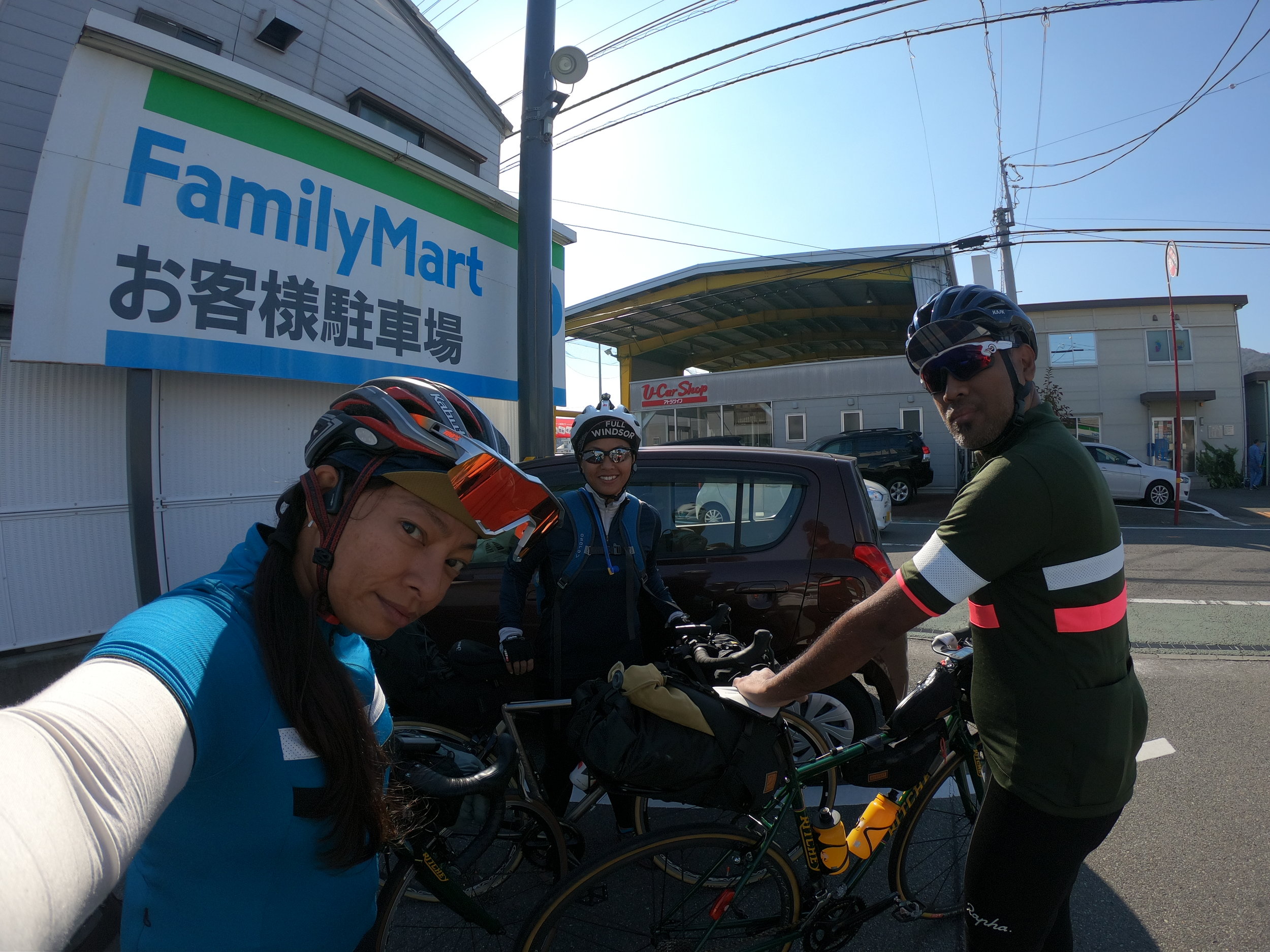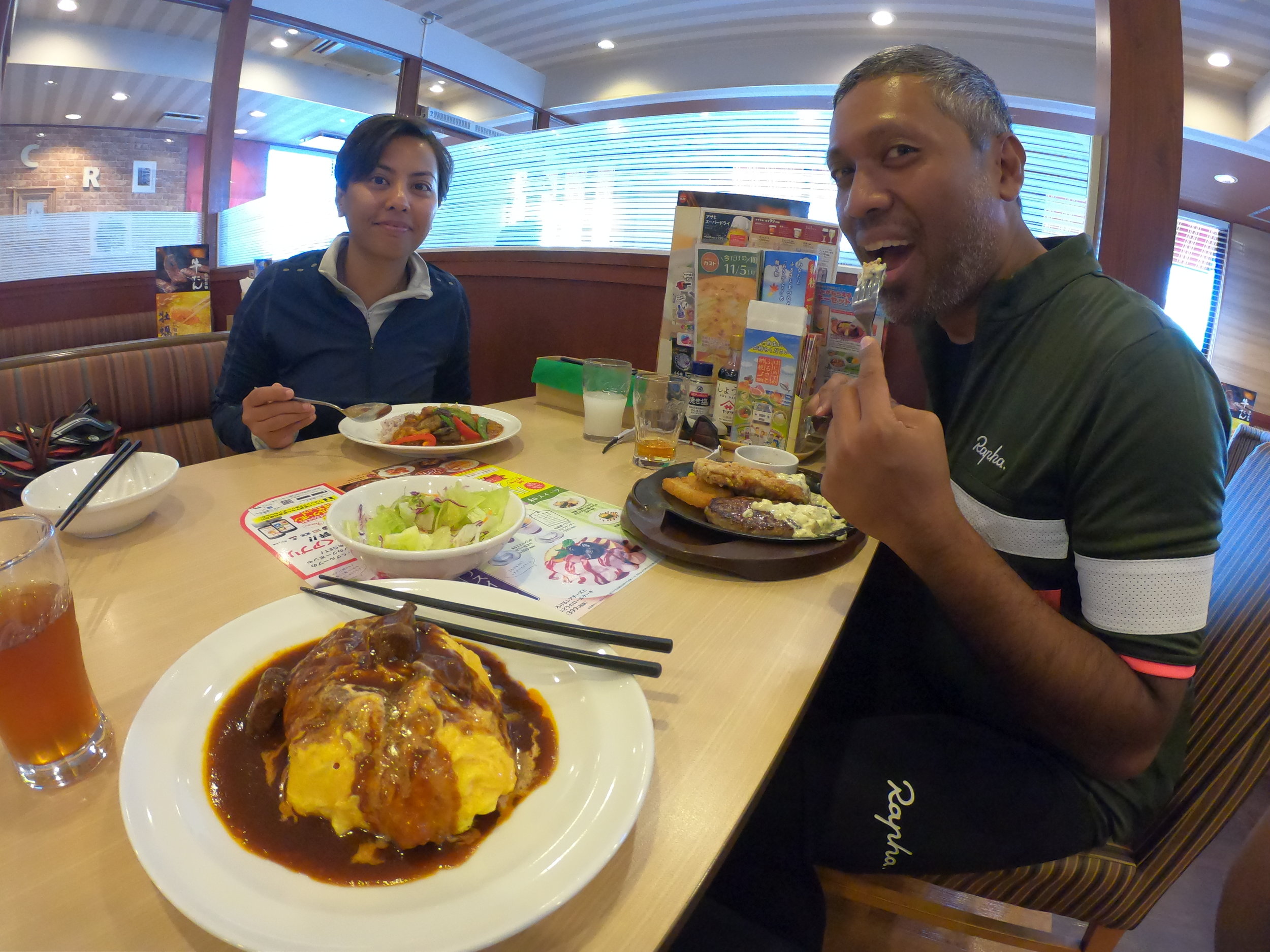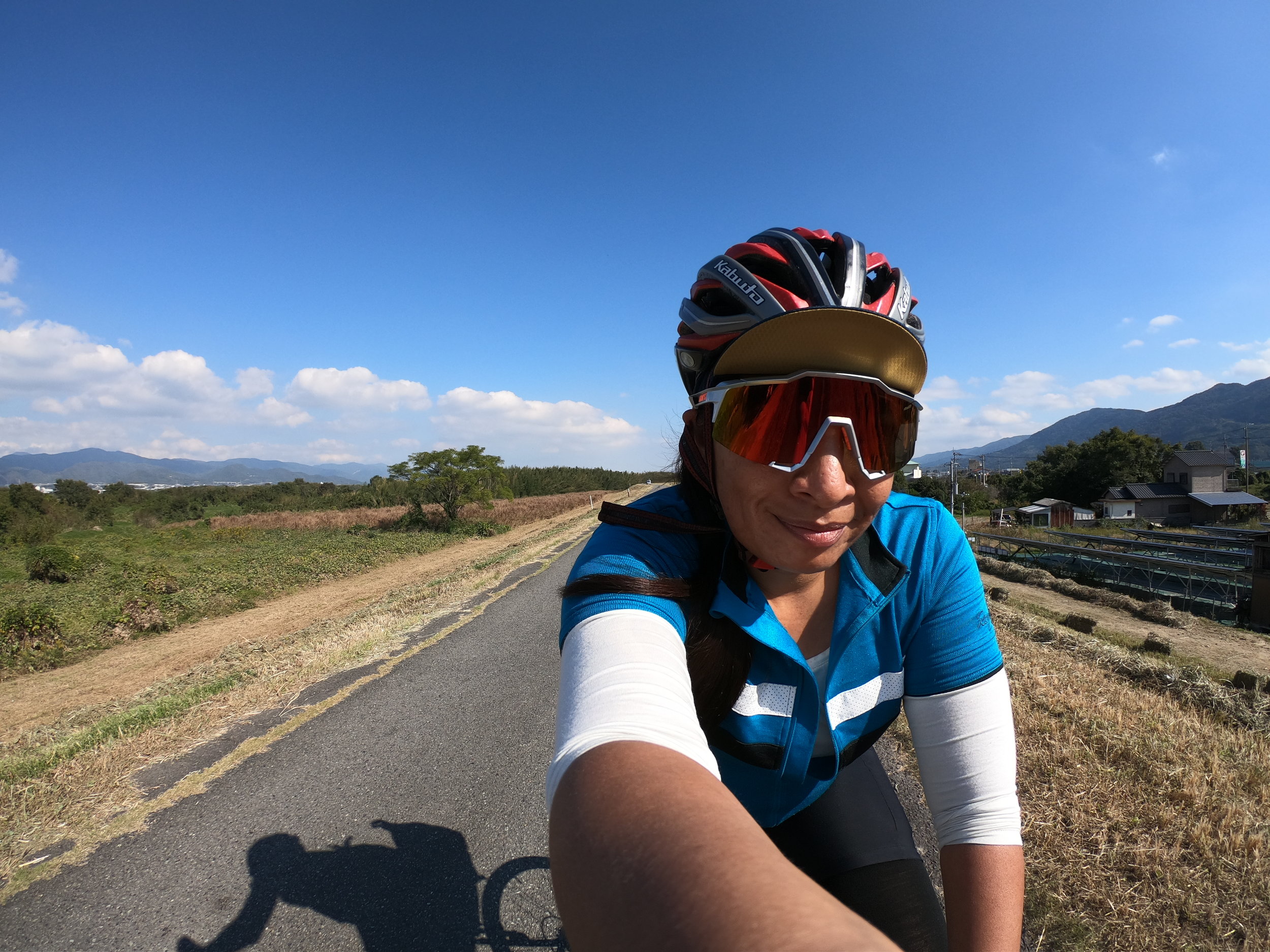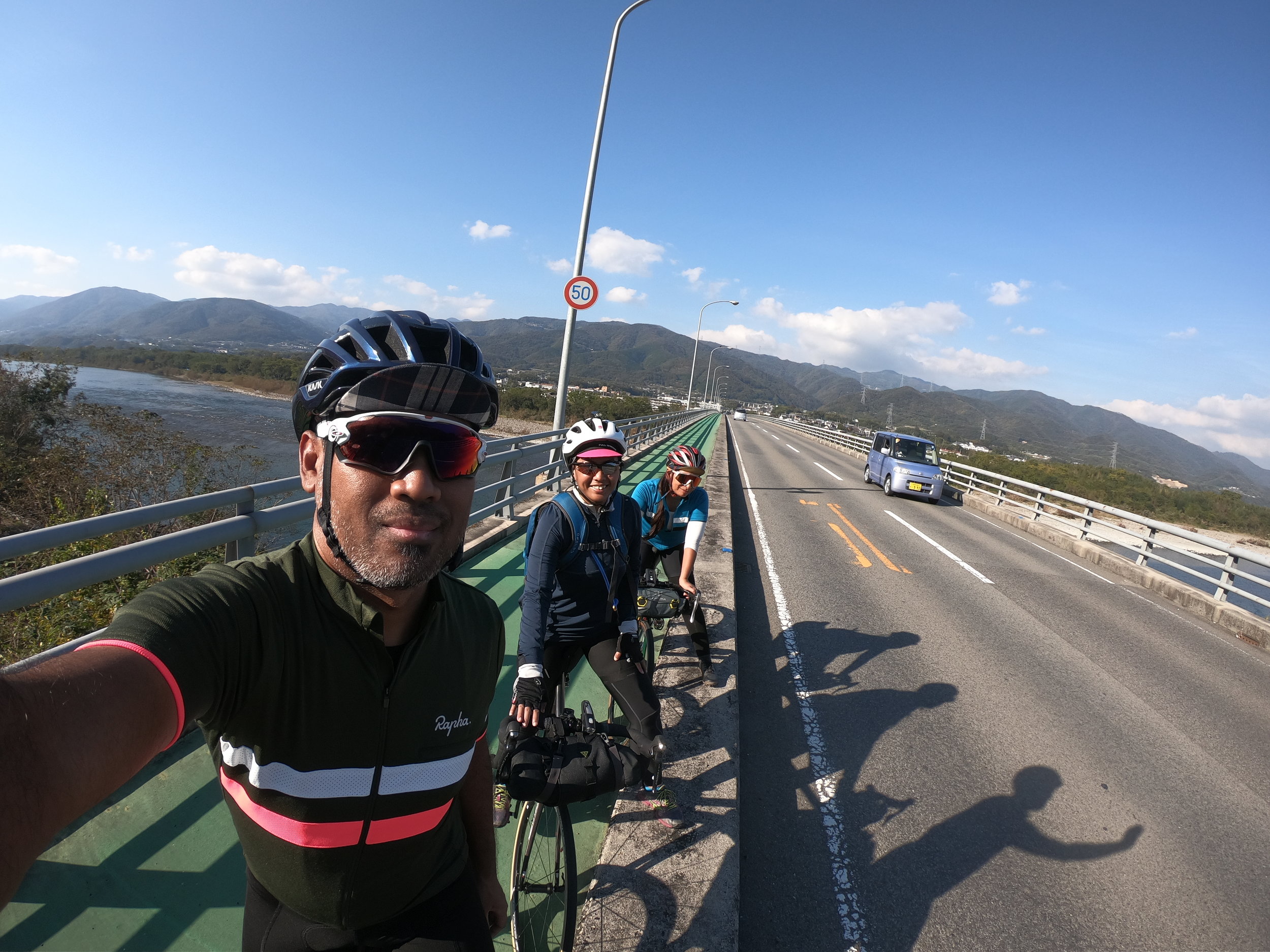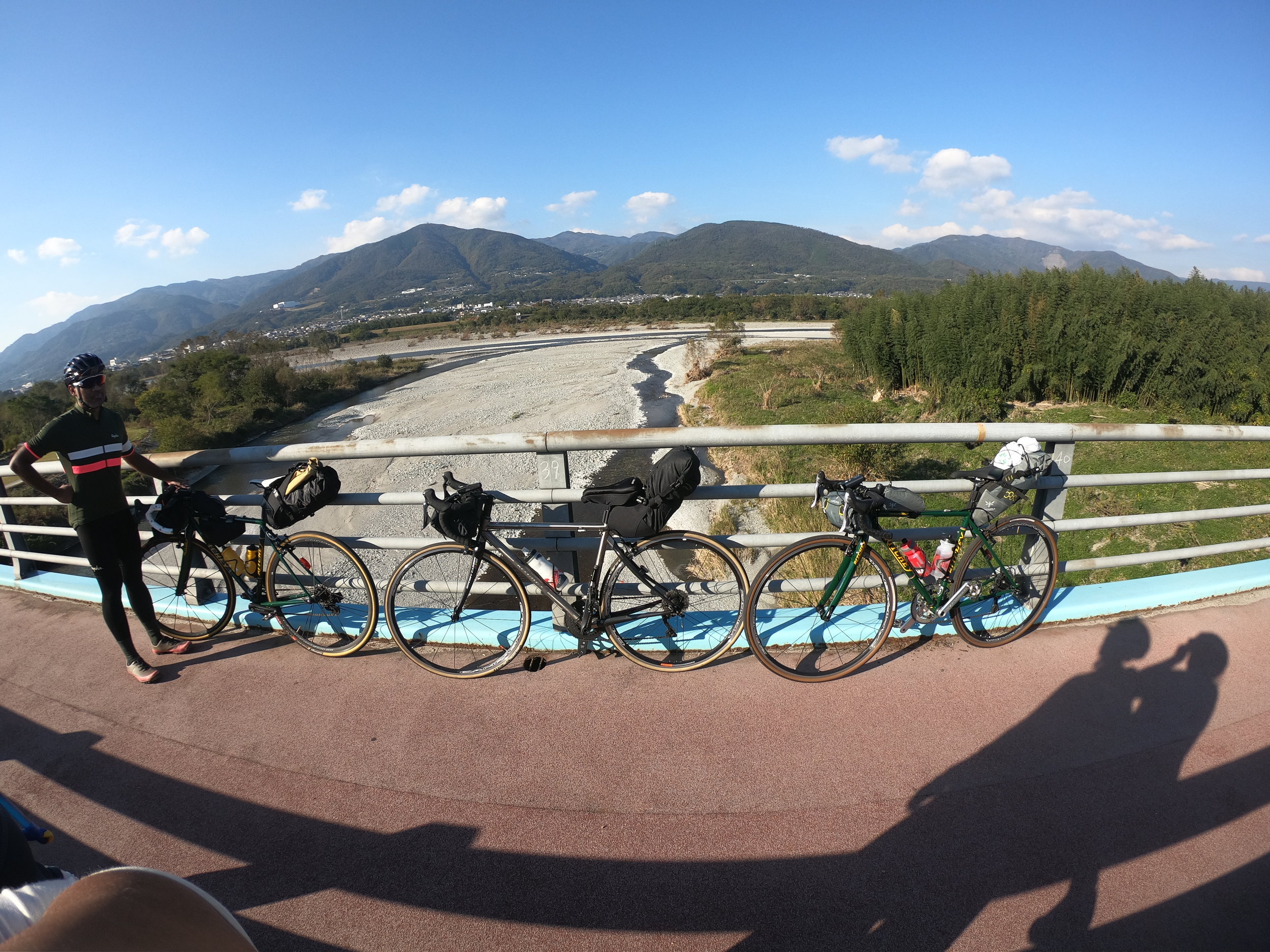Cycling Shikoku, Japan: Part 1 - Journey to the Oboke Gorge

Shikoku is the smallest of Japan’s main islands, most famous for its Pilgrimage of 88 Zen Buddhist Temples, and also a haven for cyclists who want to explore beautiful coastal roads, remote countrysides, pristine rivers and mountain passes – mostly off the beaten track.
The distance going around the island is more than 1,200 kilometers, with many thousands more if you navigate through all the inland routes. If you are looking to do a self-guided cycling tour to see more traditional areas of Japan , Shikoku makes a perfect base to do just that.
You could easily spend a month cycling through and visiting all the gems within this beautiful island, but we had a time limit of just 11 days. With that in mind, we did our best to plan a route that would take us to all of the places we wanted to see.
Our Shikoku cycling itinerary
Our journey through Shikoku took 11 days to complete, with 8 full days of cycling. Overall, we would cover a total minimum distance of 607km with more than 7,500m of elevation gain.
Stage 1: Tokushima to Oboke Gorge - 93km
Stage 2: Oboke Gorge to Kochi - 68km
Rest day to explore Kochi
Stage 3: Kochi to Shimanto - 120km
Rest day to visit the southernmost tip of Shikoku - Cape Ashizuri
Stage 4: Shimanto to Uwajima - 72km
Stage 5: Uwajima to Matsuyama - 101km
Rest day in Matsuyama to explore Dogo Onsen
Stage 6: Matsuyama to Imabari - 50km
Stage 7: Imabari to Omishima - 53km
Stage 8: Omishima to Onomichi - 50km
Ideally, adding 3 more days to the trip would have allowed us to explore more of the coastal areas on the western side of the island between Shimanto and Matsuyama, but perhaps we will save that for next time!
Starting the journey
After spending the first weekend of November exploring the highlights of Tokushima and warming up our legs with our Ritchey Breakaway bikes, we were ready to start our journey into Shikoku. We packed the minimum amount of stuff we needed into our bikepacking gear, and wheeled the rest of our luggage to the nearest Family Mart to be couriered using the Yamato Ta-Q-Bin service. Our luggage would be waiting for us when we arrived at our destination hotel in Kochi on Day 2 of our tour; take note that Yamato DOES NOT DO SAME DAY DELIVERY. But before we reached Kochi, we would be going through the beautiful Oboke Gorge first!
To see what we packed on our bikes for this trip, take a look at my article on packing light for a cycling tour.
Stage 1: Tokushima to Oboke Gorge
Start Tokushima
Finish Oboke Gorge
Distance 93km
Climbing 806m
Grade Medium
We had somewhat of a delayed start (a common issue on the first day of a long tour), departing Tokushima only by late morning. The first 20 kilometers were fairly uneventful, rolling out of the urban area and grabbing brunch at the edge of town. We followed Route 192 which was mostly parallel to the Yoshino River. We would catch glimpses of the beautiful river as the route we followed sometimes rolled up to higher elevation embankments.
As we reached closer to our midway checkpoint, we crossed to the northern bank of the Yoshino River and followed Route 12 until we reached the historical townscape of Wakimachi Udatsu. This former castle town of Wakimachi is home to a picturesque street of historical buildings, transporting visitors back in time centuries ago when it was a thriving merchant town. Most of the merchant wealth came from the trade of indigo products, which was a regional speciality.
Google Maps Location: Wakimachi
After going past Wakimachi, we crossed back to the southern bank of the Yoshino River and followed Route 192. Whenever we saw an entrance to the elevated river path, we took the opportunity to use it as these paths separated us from the main road traffic and gave wonderful views. We would continue to swap between the elevated paths and the road until we reached Miyoshi after around 70 kilometers of cycling.
From Miyoshi, the Yoshino River bends upstream into the mountains, and the last 20 kilometers would be a continuous uphill climb until we reached our destination for the evening. As we had a late start, we only had a little bit of sunlight hours left before sunset came and passed quickly. We started our climb following Route 32 heading into the Iya Valley, with the Yoshino River to our left.
As darkness started to swallow the road ahead, it became more difficult to cycle as visibility lessened. Although we have cycled along dark and narrow roads before, there was one danger factor that we did not consider: big semi trucks. which roared by us defenceless cyclists really fast.
It was literally beauty and the beast; the beautiful river valley to our left, and killer trucks on the right.
With about 10 kilometers of climbing completed, we had another 10 left to go. At this point, our nerves were slowly being shattered as truck after truck went past us at uncomfortable speeds. And it got a lot worse.
It was the most harrowing ten seconds of our lives as we found ourselves cycling for dear life through a short tunnel. The road was already narrow, and the the tunnel made it worse as there was no emergency shoulder. Midway through the tunnel, a semi truck rumbled past us, creating a draft that pulled us within inches of death. I did all I could to keep my bike going straight, and as the truck passed us, the canvas cover of the truck grazed Maya’s shoulder behind me and she did her best to maintain her trajectory. We could only keep moving, because stopping meant we would have been sucked under the truck by the strong draft.
At this point, we were severely unnerved and the last 5 kilometers felt like hell. My frayed nerves took its toll on me when I made an error in judgement eyeballing the height difference between the road and the raised pavement, doing a nice dive sideways that almost broke my helmet, and bruised my wrist, arm, hip and shoulder. After a brief stop to ensure all moving parts on my person and bike were attached and in working order, we continued moving. Luckily our accommodation was just right around the corner, and the nice lady at the reception desk had a first aid kit to clean up my scrapes. Thankfully my Ritchey Breakaway bike was saved from injury, except for a few minor scratches.
Our accommodation for the evening was the Sunriver Oboke, which had a great private onsen on the balcony overlooking the valley. It was such a relief to be able to soak my bruised and battered self in the wooden tub, and for a short while, it felt like we had crossed hell and finally entered the gates of a warm and welcoming heaven.
If you’d like to save 10% when you book accommodation on Booking.com, please use my discount referral link: https://www.booking.com/s/11_6/ekaput51
Stage 2: Oboke Gorge to Kochi
Start Oboke Gorge
Finish Kochi
Distance 68km
Climbing 906m
Grade Medium
With the sun rising over the gorge, the full natural beauty of the valley was revealed to us the next day. Compared to the deadly events of last night, the immediate morning after felt like paradise. Although I was still quite badly bruised and sore, I was thankfully able to cycle but at half of my normal intensity.
After enjoying breakfast and one last soak in the onsen, we made our way into the morning light to enjoy the beautiful views of the gorge.
The Oboke Gorge (大歩危) and the neighboring Koboke Gorge (小歩危) located further downstream, are narrow, steep sided gorges along the Yoshino River that mark the entrance into the Iya Valley. Oboke means “big dangerous steps” and Koboke means “small dangerous steps” as their jagged rock formations make them challenging to navigate through. As treacherous as they might be, the raw and beautiful landscapes draw quite a lot of visitors looking to enjoy the outdoor activities and adventures, especially whitewater rafting and canoeing, or simply taking in a leisurely boat tour.
After departing from the beautiful gorge, we continued to follow Route 32 and made a stop for early lunch at a quaint riverside cafe along our route after about 20 kilometers. The Yoshino River would continue to accompany us for a little while longer.
Even though we thoroughly enjoyed the stop at the cafe, there is an alternate route that we could have taken would go along Route 113 right after Toyonaga Station. Either way, the route continued to be a winding one through several climbs and mountain passes, and a number of tunnels. Some of the tunnels had a shoulder wide enough to ride our bikes on, but there were others that required us to dismount and walk with our bikes for safety reasons.
Vehicles going through tunnels come in phases. There will be moments of quiet in between groups of vehicles passing by, so it is always a good idea to wait for it. As far as common sense goes, always make sure to turn on both your front and rear lights when entering a tunnel.
The route would continue to gradually climb until we reached the top of the valley at around the 45 kilometer mark, at which point it turned into an extremely fast 10 kilometer descent towards the urban boundaries of Kochi. The remaining stretch was a gentle flat road all the way to the center of the city.
Exploring Kochi
The very first rest day of our cycling tour was thoroughly enjoyed in the beautiful old city of Kochi. Kochi has also been called “Tosa” since ancient times, and was ruled by Yamauchi Katsutoyo after having defeated the Chosokabe clan in the Battle of Sekigahara in 1600. The most notable historical landmark of Kochi is the castle located at the center of the city, originally built in 1603 on the order of Katsutoyo.
Like many castles during feudal times, Kochi Castle was burned down in a massive fire in 1727, but was rebuilt again in 1749 and has remained intact ever since. Kochi Castle is Japan’s only castle where all the structures constituting its main building have been preserved.
Since the castle’s structures are situated very close to one another, you can see its most important parts in a short period of time. The tower and the Otemon main gate, along with thirteen other structures at Kochi Castle have been designated as important cultural properties by the national government.
Google Maps Location: Kochi Castle
If you would like to go deeper into the castle’s history, the Kochi Castle Museum of History is its own separate and dedicated museum building located across the park along the same street. After spending our morning at the castle, we headed towards Obiyamachi to look for a places to eat.
Google Maps Location: Obiyamachi
Google Maps Location: Hirome Ichiba Market
Obiyamachi is an extensive shopping arcade that is located nearby Kochi Castle, and it’s a great place to get a bite and also to shop for local and authentic souvenirs. Situated at the western end of Obiyamachi and closest to the castle park is Hirome Ichiba Market and food court. The building itself seems small from the outside, but it manages to house over 60 shops, many of which are izakaya restaurants. As it is a food court, you have the freedom to sample pretty much anything there which makes for a wonderful culinary exploring experience.
As we really only had a single day or rest in Kochi, we did not get to see everything in this beautiful historical city aside from the area around the castle. If you have more time, this is a great list of all the places you can visit around Kochi.
Onwards to Shimanto
After freshening up all of our laundry, we packed everything into our bikepacking bags on our Ritchey Breakaway bikes and continued on our journey towards Shimanto.
You can also read our tips about packing light for a cycling tour
If you liked this tour write up, do give these other tours a read too:
Cycling Spain’s Andalucia 2017
Cycling Taiwan’s East Rift Valley, Jiufen and Houtong 2019
Cycling Seoul to Busan, South Korea 2019
Cycling Shikoku, Japan 2.0 2022
We also have a number of domestic tours if you’re looking for ideas to travel in Malaysia:
Cycling Malaysia’s Northern states to Langkawi Island
Cycling Malaysia’s West Coast from Klang to Pangkor Island
Firm believer of the N+1 bike axiom. Always in search of the next awesome route.

